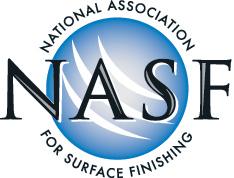| Presented in Partnership with: | |||
 |
 |
 |
 |
Search Results
The 16th William Blum Lecture, Theoretical and Practical Aspects of Alloy Plating
Author: Ernst Raub
Issue: , 1976The enormous literature on alloy plating is mostly restricted to alloys in the strict sense which contain metallic components with at least some per cent of a second metal. For practical purposes, codeposition of a second metal and also of non-metallic elements, e.g. sulfur or selenium, in small amounts is often interesting. Hydrogen as an alloying element has been known for a long time, but only incompletely investigated. The same is true for the activity of hydrogen ions in the electrolyte. The influence of electrodepositing conditions, e.g. of specific inhibition, cathodic adsorption and incorporation and of the effects of complexing agents present, is discussed. Properties of electrolytic deposits, their changes by heat treatment, and alloy formation between deposit and underlying metal or between two or more electrolytic layers are mentioned.
 |
 |
 |
 |
 |
| Home | Subscribe | Regulations | Compliance Assistance | News | Resources | Resource Locators | Directories | Online Training | About | Search | Contact | NASF.org |
The information contained in this site is provided for your review and convenience. It is not intended to provide legal advice with respect to any federal, state, or local regulation.
You should consult with legal counsel and appropriate authorities before interpreting any regulations or undertaking any specific course of action.
Please note that many of the regulatory discussions on STERC refer to federal regulations. In many cases, states or local governments have promulgated relevant rules and standards
that are different and/or more stringent than the federal regulations. Therefore, to assure full compliance, you should investigate and comply with all applicable federal, state and local regulations.
